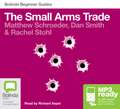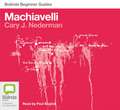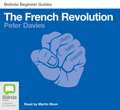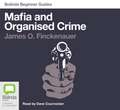Biodiversity: Bolinda Beginner Guides
Autor John Spiceren Limba Engleză CD-Audio – 31 ian 2012
Din seria Bolinda Beginner Guides
-
 Preț: 38.54 lei
Preț: 38.54 lei -
 Preț: 47.18 lei
Preț: 47.18 lei -
 Preț: 91.56 lei
Preț: 91.56 lei -
 Preț: 91.56 lei
Preț: 91.56 lei -
 Preț: 46.12 lei
Preț: 46.12 lei -
 Preț: 46.12 lei
Preț: 46.12 lei -
 Preț: 91.56 lei
Preț: 91.56 lei -
 Preț: 48.57 lei
Preț: 48.57 lei -
 Preț: 46.53 lei
Preț: 46.53 lei -
 Preț: 91.56 lei
Preț: 91.56 lei -
 Preț: 47.18 lei
Preț: 47.18 lei -
 Preț: 47.18 lei
Preț: 47.18 lei -
 Preț: 47.18 lei
Preț: 47.18 lei -
 Preț: 47.18 lei
Preț: 47.18 lei -
 Preț: 46.53 lei
Preț: 46.53 lei -
 Preț: 91.56 lei
Preț: 91.56 lei -
 Preț: 47.18 lei
Preț: 47.18 lei -
 Preț: 91.56 lei
Preț: 91.56 lei -
 Preț: 46.53 lei
Preț: 46.53 lei -
 Preț: 91.56 lei
Preț: 91.56 lei -
 Preț: 47.18 lei
Preț: 47.18 lei -
 Preț: 47.18 lei
Preț: 47.18 lei - 5%
 Preț: 44.19 lei
Preț: 44.19 lei -
 Preț: 46.53 lei
Preț: 46.53 lei -
 Preț: 47.18 lei
Preț: 47.18 lei -
 Preț: 46.53 lei
Preț: 46.53 lei -
 Preț: 47.18 lei
Preț: 47.18 lei -
 Preț: 47.18 lei
Preț: 47.18 lei -
 Preț: 46.12 lei
Preț: 46.12 lei -
 Preț: 46.53 lei
Preț: 46.53 lei -
 Preț: 46.12 lei
Preț: 46.12 lei -
 Preț: 47.18 lei
Preț: 47.18 lei -
 Preț: 91.56 lei
Preț: 91.56 lei -
 Preț: 46.53 lei
Preț: 46.53 lei -
 Preț: 91.56 lei
Preț: 91.56 lei -
 Preț: 47.18 lei
Preț: 47.18 lei -
 Preț: 91.56 lei
Preț: 91.56 lei -
 Preț: 46.53 lei
Preț: 46.53 lei -
 Preț: 47.18 lei
Preț: 47.18 lei -
 Preț: 91.56 lei
Preț: 91.56 lei -
 Preț: 46.53 lei
Preț: 46.53 lei -
 Preț: 47.18 lei
Preț: 47.18 lei -
 Preț: 46.12 lei
Preț: 46.12 lei -
 Preț: 46.53 lei
Preț: 46.53 lei -
 Preț: 46.53 lei
Preț: 46.53 lei -
 Preț: 46.53 lei
Preț: 46.53 lei -
 Preț: 46.53 lei
Preț: 46.53 lei -
 Preț: 46.53 lei
Preț: 46.53 lei
Preț: 91.56 lei
Nou
Puncte Express: 137
Preț estimativ în valută:
17.52€ • 18.10$ • 14.58£
17.52€ • 18.10$ • 14.58£
Indisponibil temporar
Doresc să fiu notificat când acest titlu va fi disponibil:
Se trimite...
Preluare comenzi: 021 569.72.76
Specificații
ISBN-13: 9781743104514
ISBN-10: 1743104510
Ediția:Unabridged ed
Editura: Bolinda Publishing
Colecția Bolinda Beginner Guides
Seria Bolinda Beginner Guides
ISBN-10: 1743104510
Ediția:Unabridged ed
Editura: Bolinda Publishing
Colecția Bolinda Beginner Guides
Seria Bolinda Beginner Guides
Notă biografică
John Spicer is Professor of Marine Zoology at the University of Plymouth. He is co-author of the bestselling textbooks Biodiversity: An Introduction and The Invertebrates.
Cuprins
1 The pandemic of wounded biodiversity
Biodiversity ¿ what was that again?
A long, leisurely trip to La Jolla
Directions
2 Teeming boisterous life
The big picture
The volleyball on Mission Beach
`A rose by any other name¿¿what¿s a species?
Morphological species
Identifying species without ever seeing them
Biological species
Evolutionary species
Naming species
How many living species¿and what are they?
1) To the nearest approximation (almost) every organism is an arthropod¿?
2) Greenery: The Plantae
3) Fungi: Mushrooms, moulds and yeasts ¿ The Fungi
4) Mollusca: Shell life
5) Chordata: Animals with backbones¿mostly
6) Protozoa or Protista?
7) Nematoda: The roundworm that¿s the fly in the ointment?
8) Bacteria and Archaea: Microbial life
Remaining animal groupings
Viruses: All the world¿s a phage¿ or nearly
New species
Planting and growing the `tree of life¿
The great chain of being
Linnaeus¿s hierarchical classification
Influence of evolutionary ideas
Chatton¿s two-domain idea
Whittaker¿s five-kingdom approach
Woese and the three-domain model
A new twist to the three-domain model
¿and when is a tree a bush?
Designs on life
The phylum and the Bauplan
Most phyla are not very species rich
An unequal distribution of life
3 Where on Earth is biodiversity?
From Berkeley, south to the Sea of Cortez
More is more
Back to Bird Rock
The species¿area relationship
Those who go down to the sea in ships
Hotspots: A tale of two definitions
Big-scale biodiversity: Biogeographical and political regions
On land
Sea
Biodiversity by country
Latitude for life?
The land
The sea
Genetic diversity and latitude
Why is there a latitudinal gradient?
Altitude
Lessons from the tops of Scottish mountains
Biodiversity takes the hump with altitude
Mountains as islands?
Aerial plankton and organisms in flight
Depth
The short-lived azoic theory
Out of our depth
A journey to the centre of the Earth
Staying close to home
Congruence: The holy grail of diversity?
4 A world that was old when we came into it: Diversity, deep time and extinction
One every twenty minutes?
A life in the year of¿
Precambrian ¿ before life?
A schoolgirl changes our understanding of life before life ¿ but no one believes her
The garden of Ediacara
A world of chemical energy, not driven by sunlight?
How familiar is the Ediacaran fauna?
Explosive Cambrian
Cambrian forms
Archaeocyatha: The only extinct phylum?
Why diversify now?
Cambrian explosion or short fuse?
Cambrian biodiversity: Good designs¿ or just lucky?
How a small quarry in British Columbia changed our understanding of biodiversity
`It¿s a Wonderful Life¿
To conclude
Post-Cambrian: Tinkering with successful designs?
Palaeozoic ¿ `first life¿
Middle and modern life
The present ¿ not set in stone
Beginnings of evolution: The origin of species
End of evolution: Extinction
The `big five¿
Causes of extinction
Extinctions as routine events in the history of life
Early humans and biodiversity
Extinctions post-1600s
Proving extinction?
The Red Data Book
Other takes on extinction
To conclude
5 Swept away and changed
Threatening behaviour
Living beyond our means
Top five direct (or proximate) causes of biodiversity loss
1) Habitat loss and degradation
2) Direct exploitation
Home economics
Food, glorious food
Industrial materials
Medicine sans frontiers
Ecotourism
Controlling the natural world
3) Climate change
4) Introduced species
The domino effect: Extinction cascades
Some light relief: Complete elimination of biodiversity by extraterrestrial means
The ultimate cause of biodiversity loss: You and me
Once upon a time there were two people¿now look how many
Not just population size but where people live
Not just population size but what people do
It¿s the poor that do the suffering
To conclude
6 Are the most beautiful things the most useless?
`¿and for everything else there¿s Mastercard¿
Costing a small planet
Use now, pay when?
What bees do for free is expensive
Costing the Earth ¿ literally
How Biosphere 1 works ¿ as one
Earth, the Goldilocks planet ¿ just right
Lovelock¿s Gaia hypothesis
Critiques of Gaia
How bits of Biosphere 1 work
Build your own biosphere: Not-so-silent running
The home marine aquarium
Mysteries and hazards
Valuable for what, and to whom?
Keeping options open
Bequest and bequeathal
Full-on philosophers and laid-back religion?
Value bestowed, not intrinsic
Intrinsic value
Valued as an object of worship or through kinship
A creator gives biodiversity value
To conclude
7 Our greatest hazard and our only hope?
Saving private land
Antecedents
Oh, Rio
Large brushstrokes
Louder than words
Arks in parks
Out of place ¿ but alive
Buzzword for the twenty-first century
Responses to Rio
Millennium Assessment
Aichi (2010) and `Pathway for Humanity¿ (2015)
Strategic plan for biodiversity and Aichi biodiversity targets
`Pathway for Humanity¿: UN Sustainable Development Goals (2015)
Global Assessment Report on Biodiversity and Ecosystem Services (2019)
Aichi
Target 11: Increasing protected areas
Goal 16: Nagoya protocol in force
Sustainability goals
No room for the individual?
Epilogue
8 No one is too small to make a difference
Going further: Suggestions for wider reading
Index
Biodiversity ¿ what was that again?
A long, leisurely trip to La Jolla
Directions
2 Teeming boisterous life
The big picture
The volleyball on Mission Beach
`A rose by any other name¿¿what¿s a species?
Morphological species
Identifying species without ever seeing them
Biological species
Evolutionary species
Naming species
How many living species¿and what are they?
1) To the nearest approximation (almost) every organism is an arthropod¿?
2) Greenery: The Plantae
3) Fungi: Mushrooms, moulds and yeasts ¿ The Fungi
4) Mollusca: Shell life
5) Chordata: Animals with backbones¿mostly
6) Protozoa or Protista?
7) Nematoda: The roundworm that¿s the fly in the ointment?
8) Bacteria and Archaea: Microbial life
Remaining animal groupings
Viruses: All the world¿s a phage¿ or nearly
New species
Planting and growing the `tree of life¿
The great chain of being
Linnaeus¿s hierarchical classification
Influence of evolutionary ideas
Chatton¿s two-domain idea
Whittaker¿s five-kingdom approach
Woese and the three-domain model
A new twist to the three-domain model
¿and when is a tree a bush?
Designs on life
The phylum and the Bauplan
Most phyla are not very species rich
An unequal distribution of life
3 Where on Earth is biodiversity?
From Berkeley, south to the Sea of Cortez
More is more
Back to Bird Rock
The species¿area relationship
Those who go down to the sea in ships
Hotspots: A tale of two definitions
Big-scale biodiversity: Biogeographical and political regions
On land
Sea
Biodiversity by country
Latitude for life?
The land
The sea
Genetic diversity and latitude
Why is there a latitudinal gradient?
Altitude
Lessons from the tops of Scottish mountains
Biodiversity takes the hump with altitude
Mountains as islands?
Aerial plankton and organisms in flight
Depth
The short-lived azoic theory
Out of our depth
A journey to the centre of the Earth
Staying close to home
Congruence: The holy grail of diversity?
4 A world that was old when we came into it: Diversity, deep time and extinction
One every twenty minutes?
A life in the year of¿
Precambrian ¿ before life?
A schoolgirl changes our understanding of life before life ¿ but no one believes her
The garden of Ediacara
A world of chemical energy, not driven by sunlight?
How familiar is the Ediacaran fauna?
Explosive Cambrian
Cambrian forms
Archaeocyatha: The only extinct phylum?
Why diversify now?
Cambrian explosion or short fuse?
Cambrian biodiversity: Good designs¿ or just lucky?
How a small quarry in British Columbia changed our understanding of biodiversity
`It¿s a Wonderful Life¿
To conclude
Post-Cambrian: Tinkering with successful designs?
Palaeozoic ¿ `first life¿
Middle and modern life
The present ¿ not set in stone
Beginnings of evolution: The origin of species
End of evolution: Extinction
The `big five¿
Causes of extinction
Extinctions as routine events in the history of life
Early humans and biodiversity
Extinctions post-1600s
Proving extinction?
The Red Data Book
Other takes on extinction
To conclude
5 Swept away and changed
Threatening behaviour
Living beyond our means
Top five direct (or proximate) causes of biodiversity loss
1) Habitat loss and degradation
2) Direct exploitation
Home economics
Food, glorious food
Industrial materials
Medicine sans frontiers
Ecotourism
Controlling the natural world
3) Climate change
4) Introduced species
The domino effect: Extinction cascades
Some light relief: Complete elimination of biodiversity by extraterrestrial means
The ultimate cause of biodiversity loss: You and me
Once upon a time there were two people¿now look how many
Not just population size but where people live
Not just population size but what people do
It¿s the poor that do the suffering
To conclude
6 Are the most beautiful things the most useless?
`¿and for everything else there¿s Mastercard¿
Costing a small planet
Use now, pay when?
What bees do for free is expensive
Costing the Earth ¿ literally
How Biosphere 1 works ¿ as one
Earth, the Goldilocks planet ¿ just right
Lovelock¿s Gaia hypothesis
Critiques of Gaia
How bits of Biosphere 1 work
Build your own biosphere: Not-so-silent running
The home marine aquarium
Mysteries and hazards
Valuable for what, and to whom?
Keeping options open
Bequest and bequeathal
Full-on philosophers and laid-back religion?
Value bestowed, not intrinsic
Intrinsic value
Valued as an object of worship or through kinship
A creator gives biodiversity value
To conclude
7 Our greatest hazard and our only hope?
Saving private land
Antecedents
Oh, Rio
Large brushstrokes
Louder than words
Arks in parks
Out of place ¿ but alive
Buzzword for the twenty-first century
Responses to Rio
Millennium Assessment
Aichi (2010) and `Pathway for Humanity¿ (2015)
Strategic plan for biodiversity and Aichi biodiversity targets
`Pathway for Humanity¿: UN Sustainable Development Goals (2015)
Global Assessment Report on Biodiversity and Ecosystem Services (2019)
Aichi
Target 11: Increasing protected areas
Goal 16: Nagoya protocol in force
Sustainability goals
No room for the individual?
Epilogue
8 No one is too small to make a difference
Going further: Suggestions for wider reading
Index
Descriere
Descriere de la o altă ediție sau format:
Reveals the roots of our biodiversity crisis, why we failed to meet targets set over a decade ago, and what we must do now to protect and preserve nature's wonders
Reveals the roots of our biodiversity crisis, why we failed to meet targets set over a decade ago, and what we must do now to protect and preserve nature's wonders
